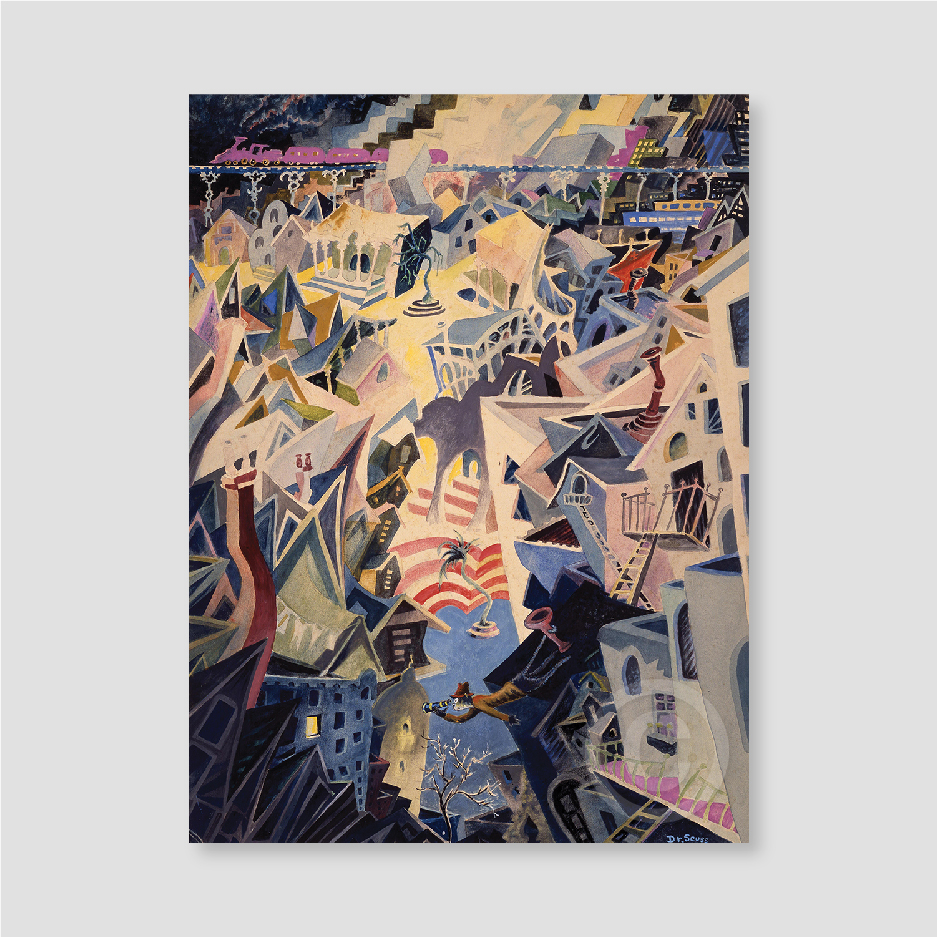the cat
behind
the hat
In 1957, Dr. Seuss, revolutionized the way that generations of children would learn to read. In the nearly 60 years “since The Cat in the Hat exploded onto the children’s book scene, Theodor Seuss Geisel has become a central character in the American literary mythology, sharing the pantheon with the likes of Mark Twain and F. Scott Fitzgerald. Of his many imaginative stories, The Cat in the Hat remains the most iconic.” (U.S. News & World Report August 13, 2007)
Over time The Cat in the Hat became more than a recurring character for Ted; it also morphed into his alter ego, surfacing repeatedly in his surrealist thematic cat paintings. Whether he was a Surly Cat being ejected by an Edvard Munchian screamer, a member of the Pinkish and Greenish iconic twosome dispensing a magic dose of mischief, the Clouseauian inspector sleuthing a felon, or the Green Cat with Lights attributed to fool unsuspecting friends, Ted’s intentions went far deeper. Disguised as a potpourri of nonsense, these works combined his vivid imagination with a thoughtful understanding of human nature. Truths are whispered from these playful paintings and, if examined closely, one can see Ted winking from every whiskered face.








